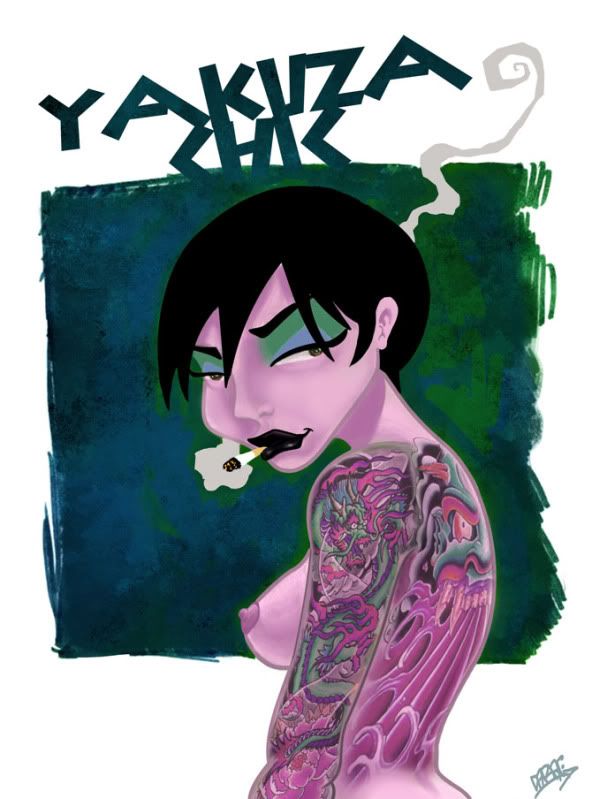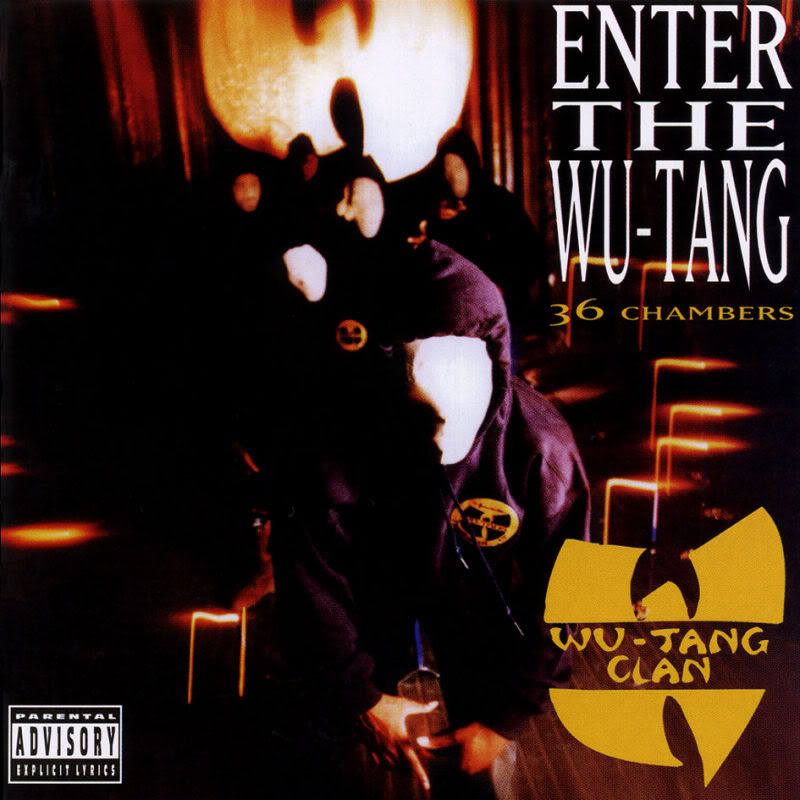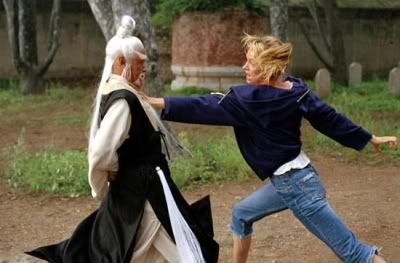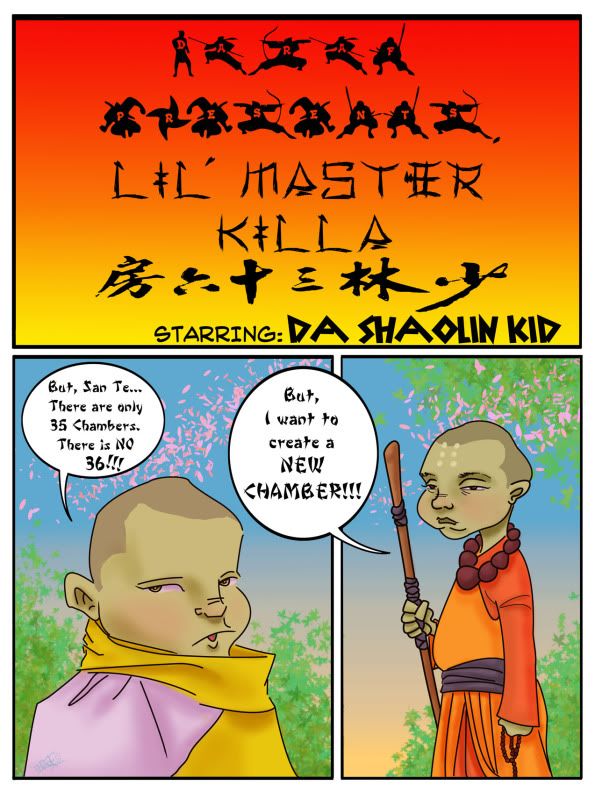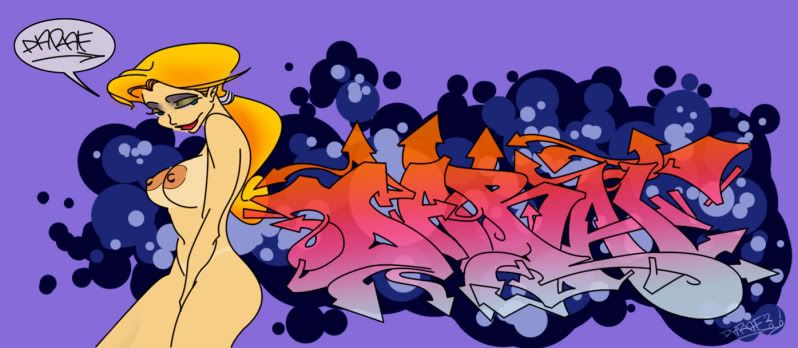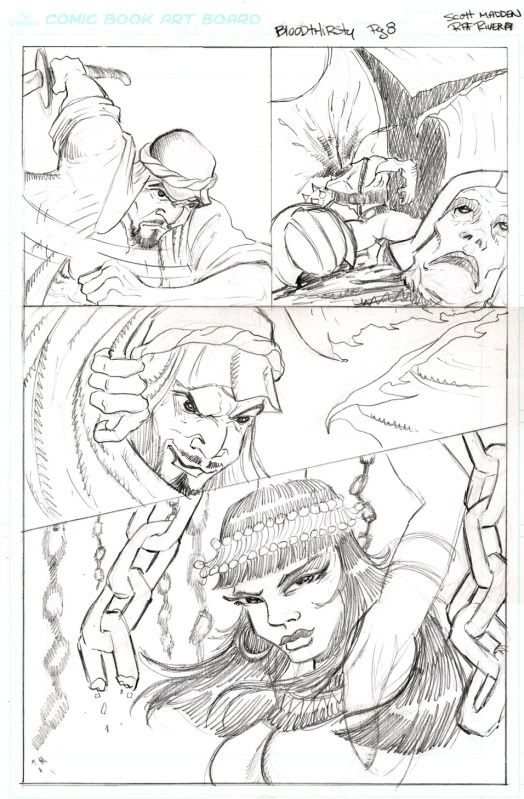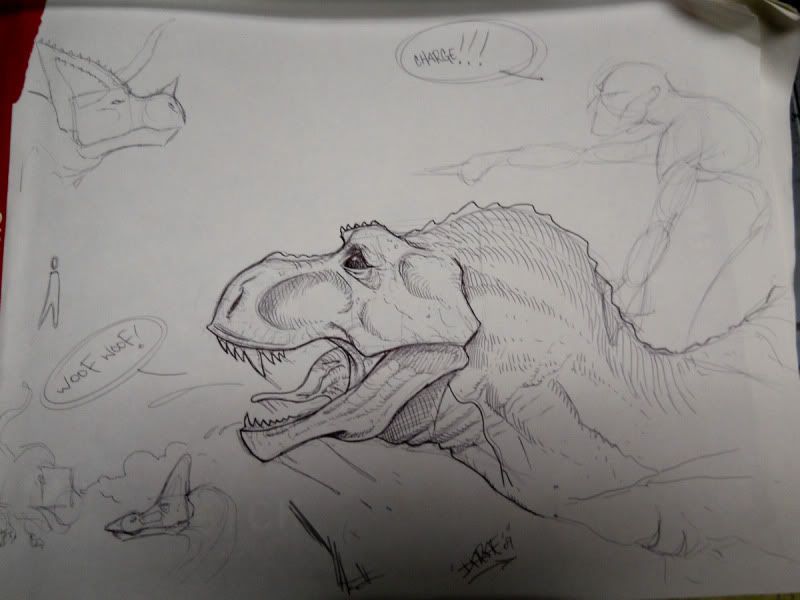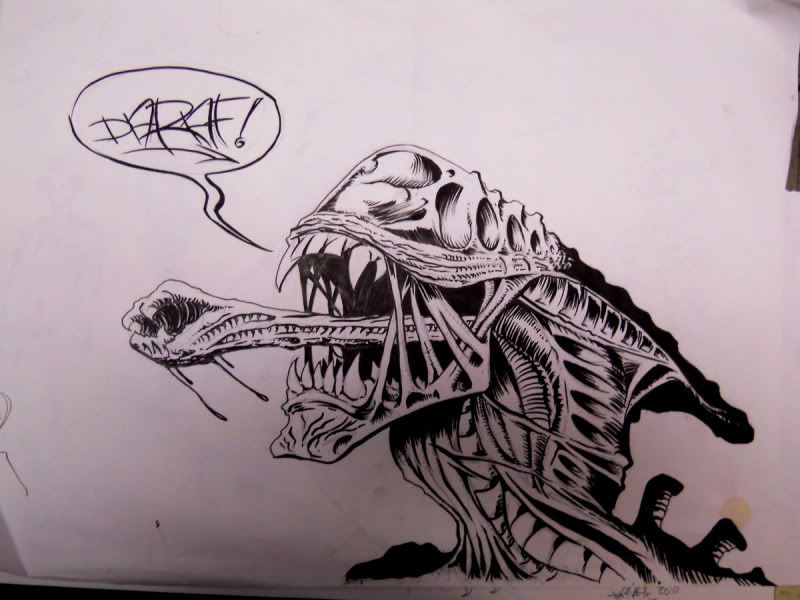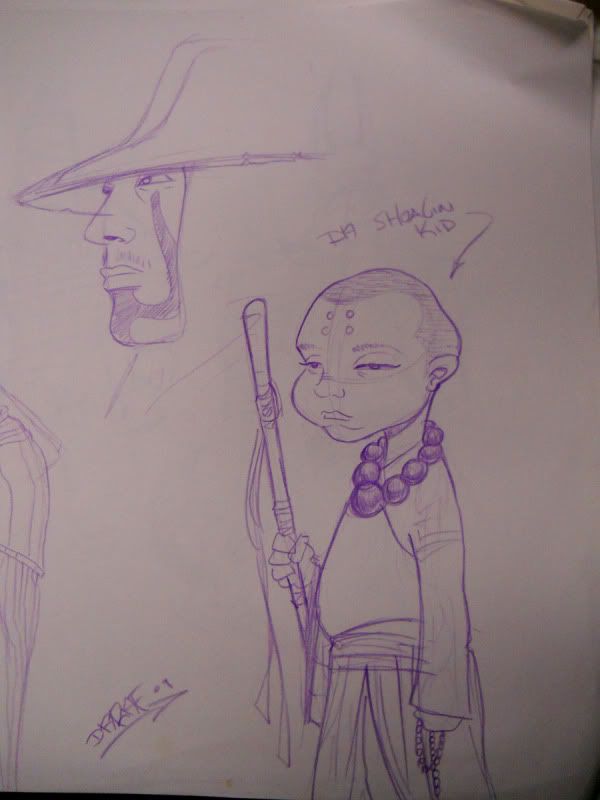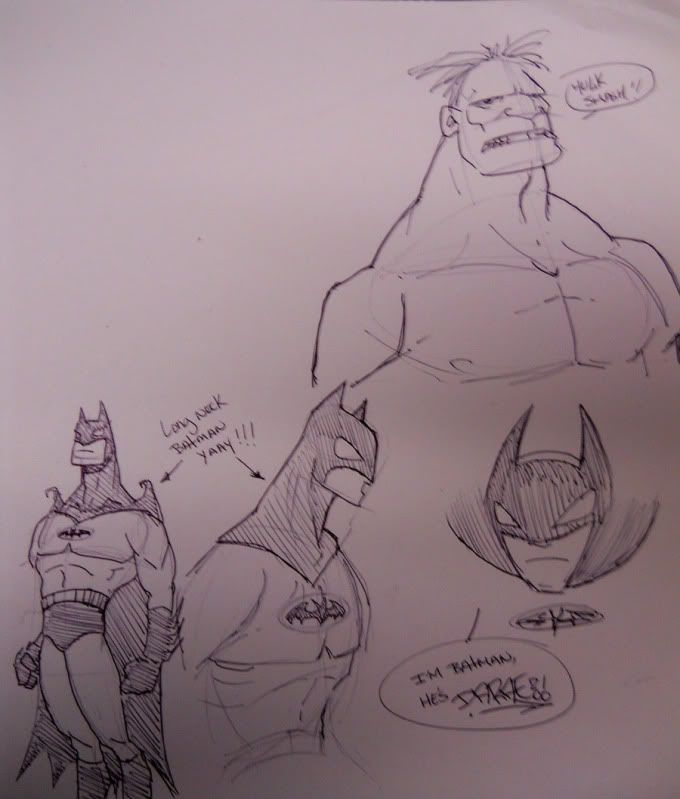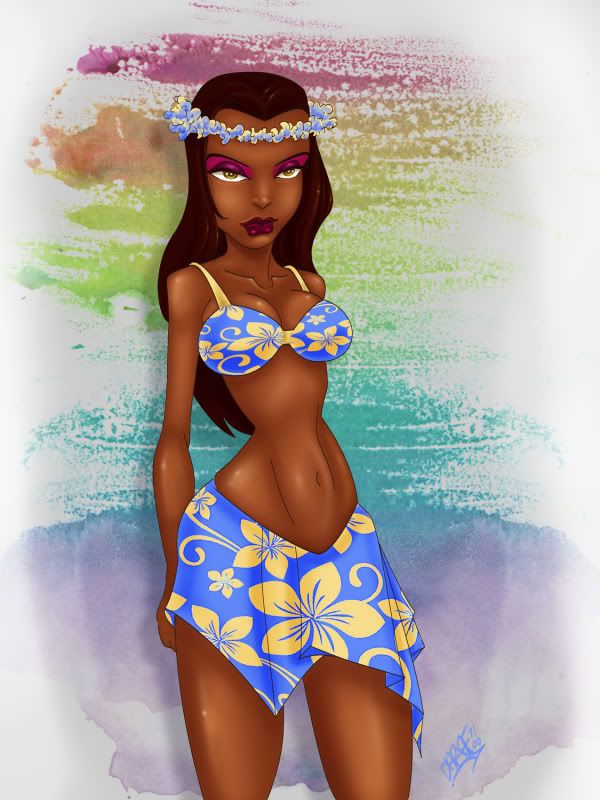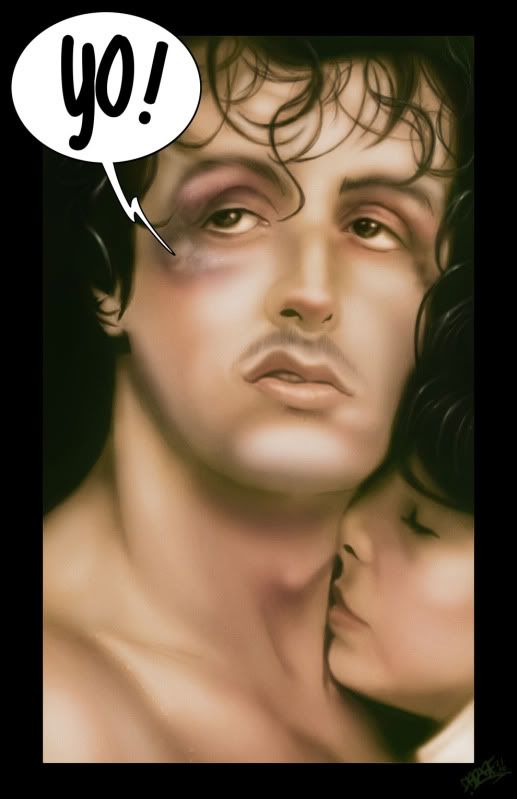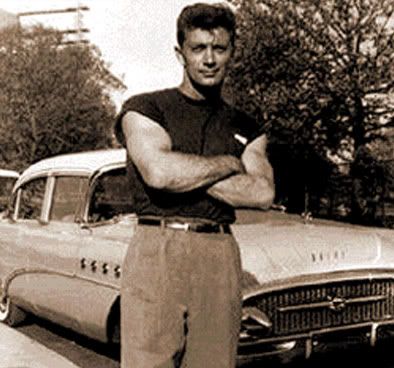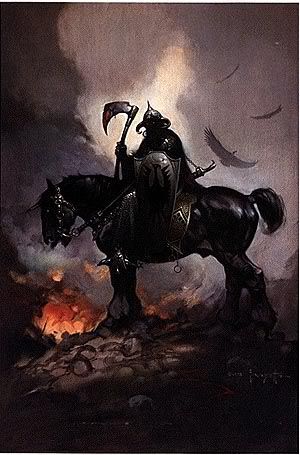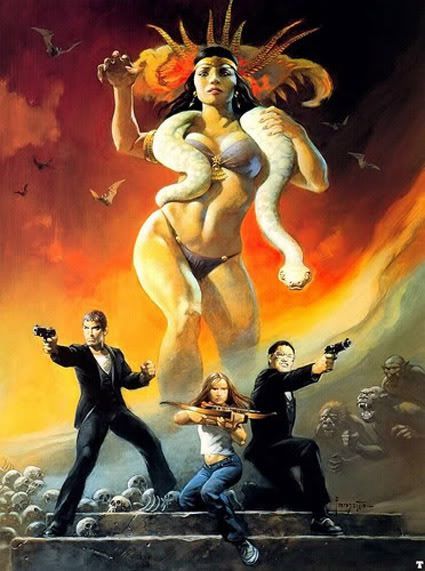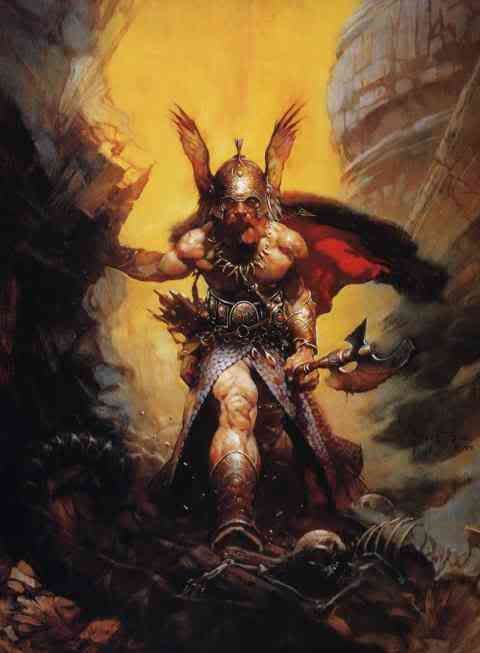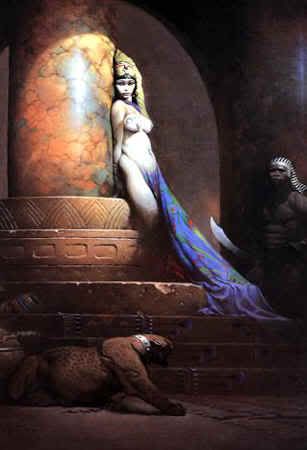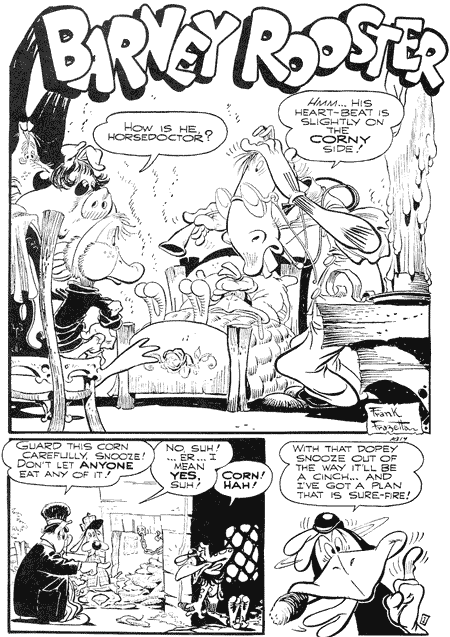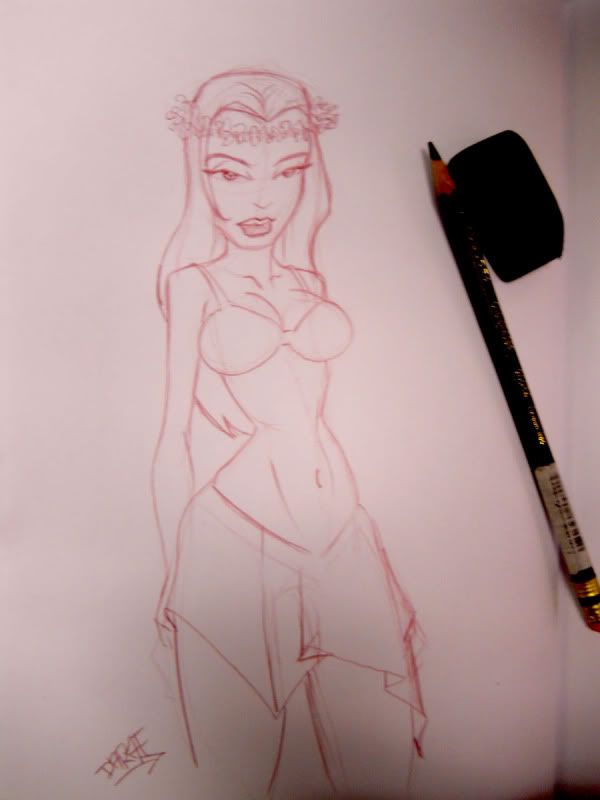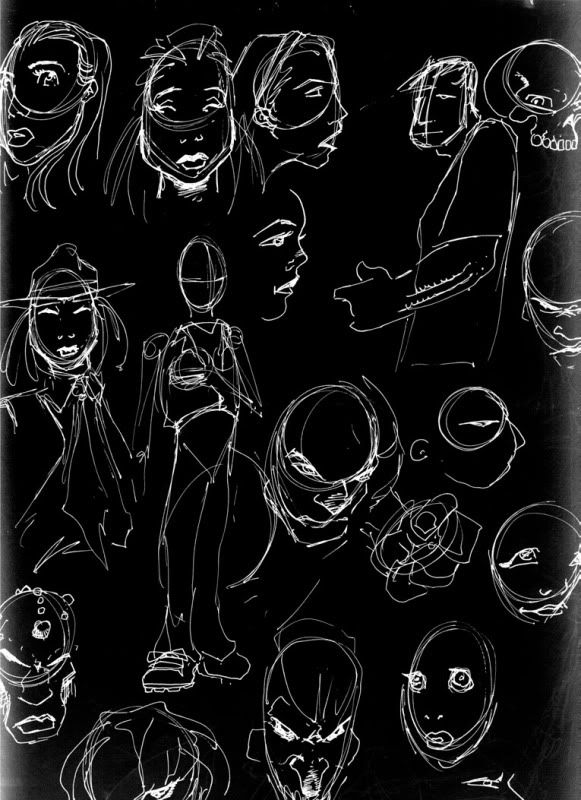Background
In Japan, organized crime and criminals come under the general heading of Yakuza. According to tradition, the name is derived from the worst possible score in a Japanese card game. It comes from Japan's counterpart to Black Jack, Oicho- Kabu. The general difference between the cardgames is that in Oicho- Kabu is that a winning total of the cards is 19 instead of 21. As you see, the sum of 8, 9 and 3, is 20, which is over in Oicho-Kabu. In a hand resulting in a score of 20, the worst possible score, a player's final score would be zero. Among the losing combinations, the phonetic sound of an 8-9-3 sequence is ya - ku - sa. It's from there the name, yakuza is derived... without worth to society. This doesn't mean that they have no use for the society, it means that the members are people that somehow do not fit in the society, in other words societies misfits.
The Yakuza were itinerant gamblers, peddlers, renegade warriors and roving bandits. They served shoguns and municipalities and their legend includes a distinct Robin Hood quality that recently emerged during the recent Kobe Earthquake. The Yamaguchi-gumi Yakuza clan quickly mobilized providing on the scene assistance to Kobe's earthquake victims long before the national government resolved to act. Yakuza form a central theme in Japan's popular culture and trace their origins to at least the 17th century. Therefore, among the world's criminal organizations the Yakuza are older than the Sicilian Mafia.
Yakuza strength rises and falls according to the tides of Japanese society, with estimates of core membership ranging from 80,000 to more than 110,000 in the years from 1945 to 1996. Some authorities believe Japan's National Police routinely undercount the Yakuza, numbering only those names found in confiscated membership rolls, or recorded from routine police intelligence reports. Like the Sicilian Mafia and other underworld organizations, the Yakuza are formed into families, but in Japan other distinctions emerge including that of the oyabun - kobun (father role - child role) relationship, between Yakuza chiefs and their underlings.
The Yakuza evolved into their current form late in the 19th-century under figures like Toyama Mitsuru. This son of a Samurai founded the Genyosha (Dark Ocean) Society, and later Toyama's top aide Ryohei Uchida founded the Amur River Society (Black Dragons). Like organized crime in other cultures, the Yakuza began to control construction labor and dockside labor, adding to traditional areas of enterprise in the vices, prostitution, gambling, liquor distribution, and entertainment. In the late 1960s or early 1970s the Yakuza moved into the lucrative narcotics trade and in recent years have stepped up their trade in firearms and other contraband. According to various sources, Yakuza have formed alliances and working relationships with Chinese Triads, Sicilian and American Mafia, Columbian drug cartels, Jamaican Posses, and assorted other criminal organizations throughout the world.
Because of their unique role in Japan's history and popular culture, and their usefulness in providing muscle to control labor unions, and providing anonymous services to the public for a variety of typical underworld products in vice and contraband accommodations between Yakuza, police, ultranationalists, government, political parties, and secret societies seems to be an accepted fact of life in Japan. Yakuza are active worldwide, wherever criminal enterprises flourish. The Yakuza have been very skillful in the employment of intermediaries and the absence of Japanese within a community does not mean an absence of Yakuza.
Kabuki-Mono
Yakuzas origin can be followed far back as to the year 1612, when men known as kabuki-mono (the crazy ones). Their odd clothing style, the distinct haircuts and bad behavior, longswords quickly got everybody's attention. They were known as masterless samurais, ronin, and several of them began to wander around in Japan as a band of robbers, plundering villages and small cities.
Machi-Yakko
Yakuza however not see kabuki-mono as their "ancestors" instead they feel that they are machi-yakko(City servant), Machi-yakko became the people's heroes, praised by the citizens for their help against kabuki-mono. The Machi-yakko were often weaker, far less trained and equipped than kabuki- mono. Therfore they were compared with England's Robin Hood. Kabuki-mono were known for their ruthless behavior and terrorizing all the surrounding areas. They were well known for stabbing people for pleasure. Kabukimono were gave their groups scary names and spoke in vulgar slang. The current yakuza did not evolve until about the middle of the 17th century. Its members were bakuto (gamblers) and tekiya (street vendors). Something that was remarkable were their loyalty to each other. They protected each other regardless even if it meant going against their own family.
Kabuki-mono generally came from shoguns or samurais whom during long peaceful times were forced into unemployment. Almost all yakuza have the same type of background poor, criminals and misfits. The Yakuza became a family for them. They got help with problems, got attention and could feel a certain saftey.
The Industrialization of Japan
When Japan began to industrialize, the yakuza followed Japan's deploying society. They began to recruit employees within the construction business and people working at the docksides. They began to check the rickshaw business. The gambling side of the Yakuza was at this time sorta put to the side, because the police were cracking down roughly on the bakuto- gangs. Tekiya on the contrary flowered and expanded since most of their activities were not considered illegal but more importantly not on the surface of society. Yakuza began to develop an interest for policy and started affiliations with certain political officials. They began to cooperate with the authorities in order to get certain contributions and to ease the harassment from the authorities. About up until the year 1925 Japan had an Emperor. But the course of events in the world was proving that a democratic rule was better than aristocratic, therefore Japan initiated a public vote for all men 1925. Within a few years the communist and socialist parties were found. Around then the prince, that became emperor 1926, existed however his staff of military and some other officials did not agreed with democracy. The economical depression at the end of 20th century created suspicion against the western worlds liberalism. They took advantage of this and different secret organizations were created that trained its members in warfare, languages, assassination, blackmail etc. The ultranationalism terror lasted on into the 1930s. They murdered two prime ministers, two finance ministers, attacked several politicians, and industrialist. The Yakuza supplied them with the muscles and men in order to help and train these underworld organization. This type of yakuza is called the unyoke (political right).
The Occupation Years
After WWII when the American troops occupied Japan they saw the yakuza as the biggest threat against their forces. They began to watch the yakuza's activities. The American troops rationed out food and as a result the black market flowered and made the gangs rich and powerful. It were during the occupations that a new sort of yakuza began to grow, gurentai (street hustler). They were for the most part involved in robbery and black market. Yakuza became influenced by the American gangster movies and began to dress in black suits with white shirts, black sunglasses and cropped hair. They became tougher and more violent, the sword became history, now it was firearms. It was about this time that not just gamblers and storekeepers became exposed to violence but also the ordinary person was becoming more of a victim. Between about the years of 1958 and 1963 the number of yakuza- members increased with over 150%, to 184,000 members, now are they well below that. There are an estimated 5,200 different gangs in Japan. Also during that time they began to mark out their territories and wars started between the gangs. It is believed that the wars between the gangs were settled by a man named Yoshio Kodama. Kodama was Japan's underworld counterpart to America's Al Capone.
The Yakuza Organization
For the yakuza it doesn't matter were you came from, which country or from which class of society you belonged to, you can become a member anyway. Yakuza takes care of the misfits in the society. Yakuza members can be youth that been abandoned by their parents, youths seeking refuge from the high pressures of school, refugees from Korea, China etc. The boss becomes their father and their comrades as brothers. The Yakuza offers not only companionship but also money, status, and authority. A part of a group were you feel useful and needed. There are no thresholds or requirements in order to become a member. But when you are inside strict obedience to the superiors is demanded. The yakuza sees himself, as Machi-yakko, the people's rescuer and helper. Far before any working courts existed in Japan the yakuza existed. If your clans chief couldn't or wouldn't help resolve a dispute you could turn to the local yakuza for help. They solved the problem in return for money. The solution however was more brutal than if you had turned to the police. The yakuza structure exists in two types of yakuza, clan yakuza and freelance yakuza.
Freelance Yakuza
Freelancing yakuza are generally wanna be's yakuza that don't commit serious crimes and they are usually little more than a group of hustlers. They have however some difficulties surviving since the clan yakuza do not afford them any protection or assistance and generally doesn't allow them to operate within their territories. Clan yakuza can tip the police about crimes that the freelance yakuza commit. If the freelance yakuza earns to much money, the clan yakuza kills the freelancing yakuza or makes him disappear without a trace. The clan yakuza however have certain uses for a freelance yakuza. If the clan yakuza needs something done that they not want the clan to be associate with, they can turn to a freelancing yakuza that, for a sum of money, does the job for them. A freelance yakuza can also be used as a scapegoat for crimes. A freelancer is truly a genius if he can manage to begin his own clan and stay alive. Usually a freelance yakuza becomes a clan member unless he gets killed.
Clan Yakuza
The clan have been compared to the Sicilian mafias "family". The clan is structured much like a common family in traditional Japan. The clan has a hierarchy structure. The clans head chief is called Oyabun, that means Father. Beneath him he has his children(Wakashu) and brothers(Kyodai). These are not his real children and brothers, only designations of rank and position they have within the clan. All the members in the clan obey the Oyabun and in return he protects them against all dangers. Oyabun is almighty within the clan and his words is the law. All obey him without hesitation or concern for their own life. Beneath him, oyabun has an adviser that is called Saiko-komon and he has a staff of advocates, accountants, secretaries and advisers. The children's (Wakashu) boss called Waka gashira. He is number two in the clan after Oyabun, not in rank but in authority. He acts as a middleman to see that the oyabun's orders are being accomplished.
The children leaders over their own (sub) gangs and over time can move up in the structure. In that way the clan becomes a ramification with several sub families. The oyabun's "brothers" or Kyodai, boss is called Shatei gashira. Shatei gashira is of higher rank than Waka gashira but doesn't have more authority. "The Brothers" have their own "children" or "younger brothers"(Shatei). Shatei, has its own sub gangs etc. Everyone obeys its gangleader, but it's always the oyabun's word that counts.
Tattoos
It's usual within yakuza circuits to tattoo themselves, usually is it their clan's badges that they have all over their body. The origin of the yakuza tattoo comes from the Bakuto. They usually tattooed a black ring around the arm for each crime they committed. Finally it became a symbol of strength. It can take over 100 hours to do an entire back tattoo. The tattoo was to illustrate you were unwilling to accommodate yourself to societies rules and norms. Now is it to illustrate your clan affiliations.
Yubitsume
The manner comes originally from the Bakuto. If a gambler couldn't pay back a debt or something like that the persons tip of the little finger got cut off, which damage the hand and the person could not hold his sword as well as before. Also that way other people could see if a person haven't paid a debt, which could bring certain problems, since gambling always been prohibited in Japan. Yubitsume is when you cut of one of your fingers and send it to the Kumicho. This is done as an apology for disobedience. It can be done to atone for a wrongdoing but can also be done to spare one of your "children". When you have done something that your Kumicho dislikes you take a sharp item, cut off a fingertip, wrap it in paper and send it to the Kumicho and beg for his forgiveness. If it's the first time you cut off the little fingertip there after it becomes the next little finger and so on. Because of that you may see yakuza members that are without several of his fingers. This helps often at wrongdoings, but if you've done something all to seriously, as e.g betray the entire clan, there´s nothing that can help you from becoming a statistic.
NOTE: Reprinted from "Okinawa Japan Virtual Ginza Your Door to Okinawa Japan". Available on-line at http://www.virtualginza.com/yakuza.htm. Virtual Ginza is an excellent source of all things Okinawan
Here is my sexy little Deadly Yakuza warrior:
